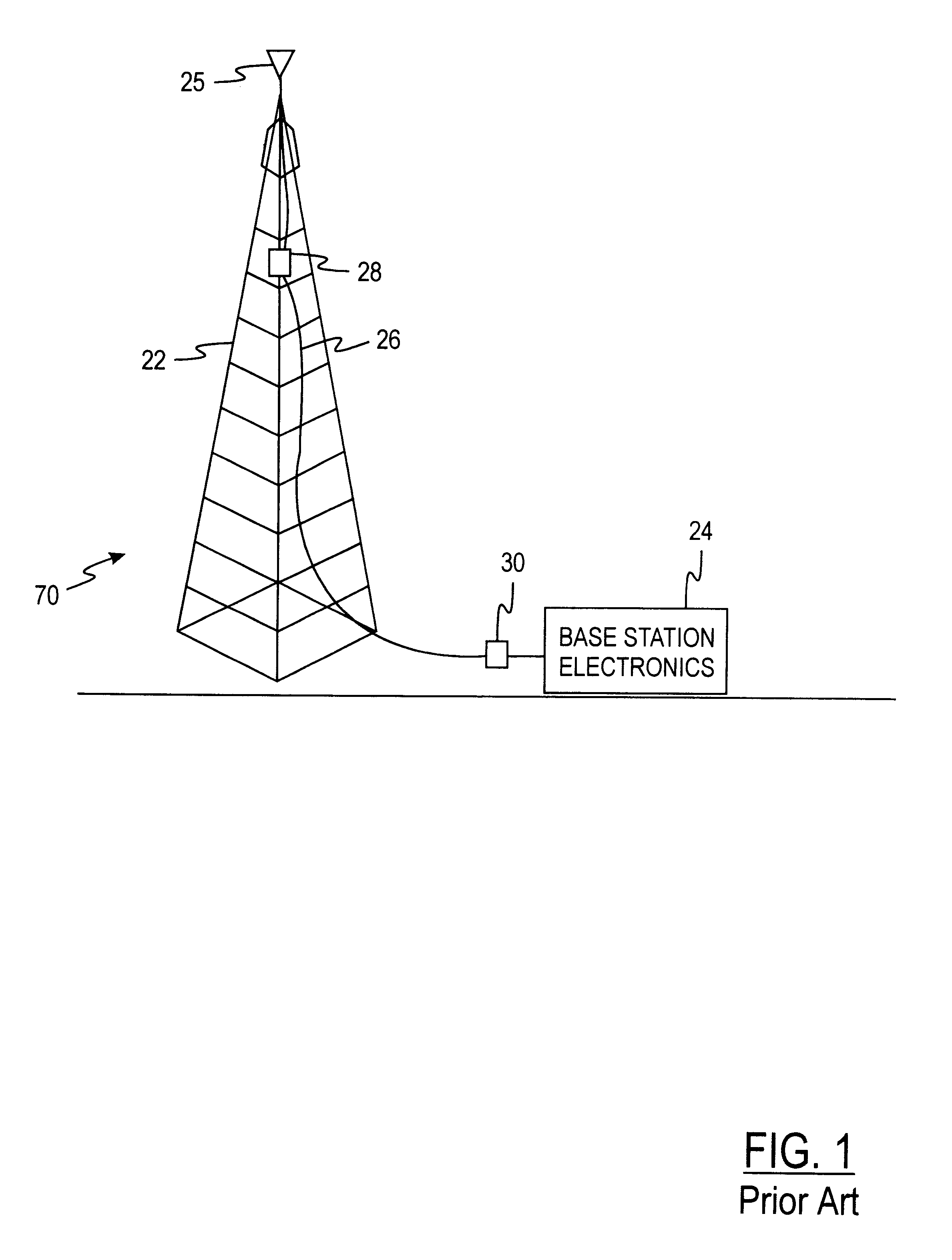Lightning protection for an active antenna using patch/microstrip elements
- Summary
- Abstract
- Description
- Claims
- Application Information
AI Technical Summary
Benefits of technology
Problems solved by technology
Method used
Image
Examples
Embodiment Construction
FIG. 1 shows a conventional arrangement for a Cellular or PCS base station 20 having a tower 22 with a passive antenna 25 and ground-based electronics 24 connected to the antenna 25 by an RF cable 26. Lightning arrestor(s) 28, 30 are used either after the antenna at the tower top or at the base station, before the electronics, or both. Typically, the arrestors 28, 30 are high voltage capacitors wired in series with the RF cable 26. This prevents low frequency or DC current, associated with the absorbed corona energy, from a near miss lightning strike, from traveling through the RF coaxial cable into the base station electronics.
FIG. 2 shows a side view, partially in section, of a typical patch antenna system 40, using an array of patch antenna elements (or "plates") 42 and aperture coupling of the patch antenna elements 42 to a corporate feed 44, at apertures (irises) 46 in a ground plane 48. However, the invention also applies to coaxial (cable) coupling techniques. The corporate f...
PUM
 Login to View More
Login to View More Abstract
Description
Claims
Application Information
 Login to View More
Login to View More - R&D
- Intellectual Property
- Life Sciences
- Materials
- Tech Scout
- Unparalleled Data Quality
- Higher Quality Content
- 60% Fewer Hallucinations
Browse by: Latest US Patents, China's latest patents, Technical Efficacy Thesaurus, Application Domain, Technology Topic, Popular Technical Reports.
© 2025 PatSnap. All rights reserved.Legal|Privacy policy|Modern Slavery Act Transparency Statement|Sitemap|About US| Contact US: help@patsnap.com



